Computational Fluid Dynamics Simulation Approach for Scrubber Wash Water pH Modelling
Abstract
:1. Introduction
2. Study Aim, Materials and Methods
2.1. Marine Environment and Seawater Alkalinity
2.2. Main Parameters and Initial Setup Geometry
- Seawater temperature: 25 °C;
- Discharge water temperature: 35 °C;
- Discharge water flow rate: 3050 m3/h—considered to be the flow at full load while the ship is stationary;
- Number of outlets: 2;
- Discharge water pH: 3;
- Considered ship speed: 0 kn (stationary).
- The need to decrease the computational effort leads to the model being generated to consider only the hull section in the area of interest.
2.3. Domain Boundaries
- −
- opening, for the water volume situated on the fore and aft side of the ship, for the outer water domain facing from ship shell and to the water surface, and also under the keel area; this boundary condition allows the fluid to cross the boundary surface in either direction. For example, all of the fluid might flow into the domain at the opening, or all of the fluid might flow out of the domain, or a mixture of the two might occur.
- −
- inlet, only for the pipe surface situated before the two openings in the side shell; for the subsonic inlet, the magnitude of the inlet velocity is specified, and the direction is taken to be normal to the boundary. The direction constraint requires that the flow direction, Di, is parallel to the boundary surface normal, which is calculated at each element face on the inlet boundary.
- −
- wall, for the ship shell and pipe walls; there was considered a No Slip wall, with the velocity of the fluid at the wall boundary of 0.
2.4. Mesh Details
3. Simulation Model Description
3.1. Turbulence Model
3.2. Simulation Sensitivity and Stability
3.3. Scrubber Wash Water pH Development Study
4. Results
5. Discussion
6. Conclusions
Author Contributions
Funding
Institutional Review Board Statement
Informed Consent Statement
Conflicts of Interest
References
- Atkins, P.W.; De Paula, J. Physical Chemistry; Oxford University Press: Oxford, UK, 2006. [Google Scholar]
- Batchelor, G.K. An Introduction to FLUID Dynamics; Cambridge University Press: Cambridge, UK, 2001. [Google Scholar]
- Bronsted, J.N. Some remarks on the concept of acids and bases. Recl. Trav. Chim. Des Pays-Bas 1923, 42, 718–728. Available online: https://www.chemteam.info/Chem-History/Bronsted-Article.html (accessed on 6 January 2022).
- Choi, Y.S.; Lim, T.W. Numerical Simulation and Validation in Scrubber Wash Water Discharge from Ships. J. Mar. Sci. Eng. 2020, 8, 272. [Google Scholar] [CrossRef] [Green Version]
- Renforth, P.; Henderson, G. Assessing Ocean alkalinity for carbon sequestration. Rev. Geophys. 2017, 55, 636–674. [Google Scholar] [CrossRef]
- Flagiello, D.; Esposito, M.; Di Natale, F.; Salo, K. A Novel Approach to Reduce the Environmental Footprint of Maritime Shipping. J. Marine. Sci. Appl. 2021, 20, 229–247. [Google Scholar] [CrossRef]
- Qureshi, M.A.A.; Tahir, R.M. The Implementation of Water Salinity Tester as a quantitative tool to determine the Total Dissolved Solids in water. Tech. Rom. J. Appl. Sci. Technol. 2021, 3, 1–8. [Google Scholar]
- Available online: www.valmet.com (accessed on 28 March 2021).
- Teuchies, J.; Cox, T.J.S.; Van Itterbeeck, K.; Meysman, F.J.; Blust, R. The impact of scrubber discharge on the water quality in estuaries and ports. Environ. Sci. Eur. 2020, 32, 103. [Google Scholar] [CrossRef]
- Khan, Z.H. Relation Among Temperature, Salinity, pH and DO of Seawater Quality. Tech. Rom. J. Appl. Sci. Techn. 2020, 2, 39–45. [Google Scholar] [CrossRef]
- Brown, K.; Kalata, W.; Schick, R. Optimization of SO2 Scrubber using CFD Modelling. In Proceedings of the “SYMPHOS 2013”, 2nd International Symposium on Innovation and Technology in the Phosphate Industry, Agadir, Morocco, 6–10 May 2013. [Google Scholar]
- Ulpre, H. Turbulent Acidic Discharges into Seawater. Ph.D. Thesis, University College London, London, UK, 2015. [Google Scholar]
- Marine Environment Protection Committee. Resolution MEPC.259 (68)—Guidelines for Exhaust Gas Cleaning Systems; Marine Environment Protection Committee: London, UK, 2015. [Google Scholar]
- Bureau Veritas—Rules for the Classification of Steel Ships—PART C and PART F—Machinery, Electricity, Automation and Fire Protection. Available online: https://marine-offshore.bureauveritas.com/nr467-rules-classification-steel-ships (accessed on 6 January 2022).
- DNV-GL. Rules for Classification, Part 4—Systems and Components; DNV-GL: Høvik, Norway, 2018. [Google Scholar]
- DNV-GL. pH Discharge Criteria for Exhaust Gas Cleaning Systems according to MEPC.259(68); DNV-GL: Høvik, Norway, 2015. [Google Scholar]
- International Maritime Organization—Sub-committee on Pollution Prevention and Response (PPR 2/2/3). Application of Calculation-Based Methodology for Verification of the Washwater Discharge Criteria for pH in Section 10.1.2.1(ii) of the 2009 Guidelines for Exhaust Gas Cleaning Systems. Available online: https://edocs.imo.org/Processing/English/PPR (accessed on 13 November 2014).
- Ansys Inc. Ansys CFX Solver Theory Guide. Ansys CFX Release 2009, 15317, 724–746. [Google Scholar]
- Stachnik, M.; Jakubowski, M. Multiphase model of flow and separation phases in a whirlpool: Advanced simulation and phenomena visualization approach. J. Food Eng. 2020, 274, 109846. [Google Scholar] [CrossRef]
- Le, T.C.; Hong, G.H.; Lin, G.Y.; Li, Z.; Pui, D.Y.; Liou, Y.L.; Wang, B.-S.; Tsai, C.-J. Honeycomb wet scrubber for acidic gas control: Modelling and long-term test results. Sustain. Environ. Res. 2021, 31, 21. [Google Scholar] [CrossRef]
- Dendy Adanta, I.M.; Rizwanul, F.; Nura Muaz, M. Comparison of standard k-ε and SST k-ω turbulence model for breastshot waterwheel simulation. J. Mech. Sci. Eng. 2020, 7, 39–44. [Google Scholar] [CrossRef]
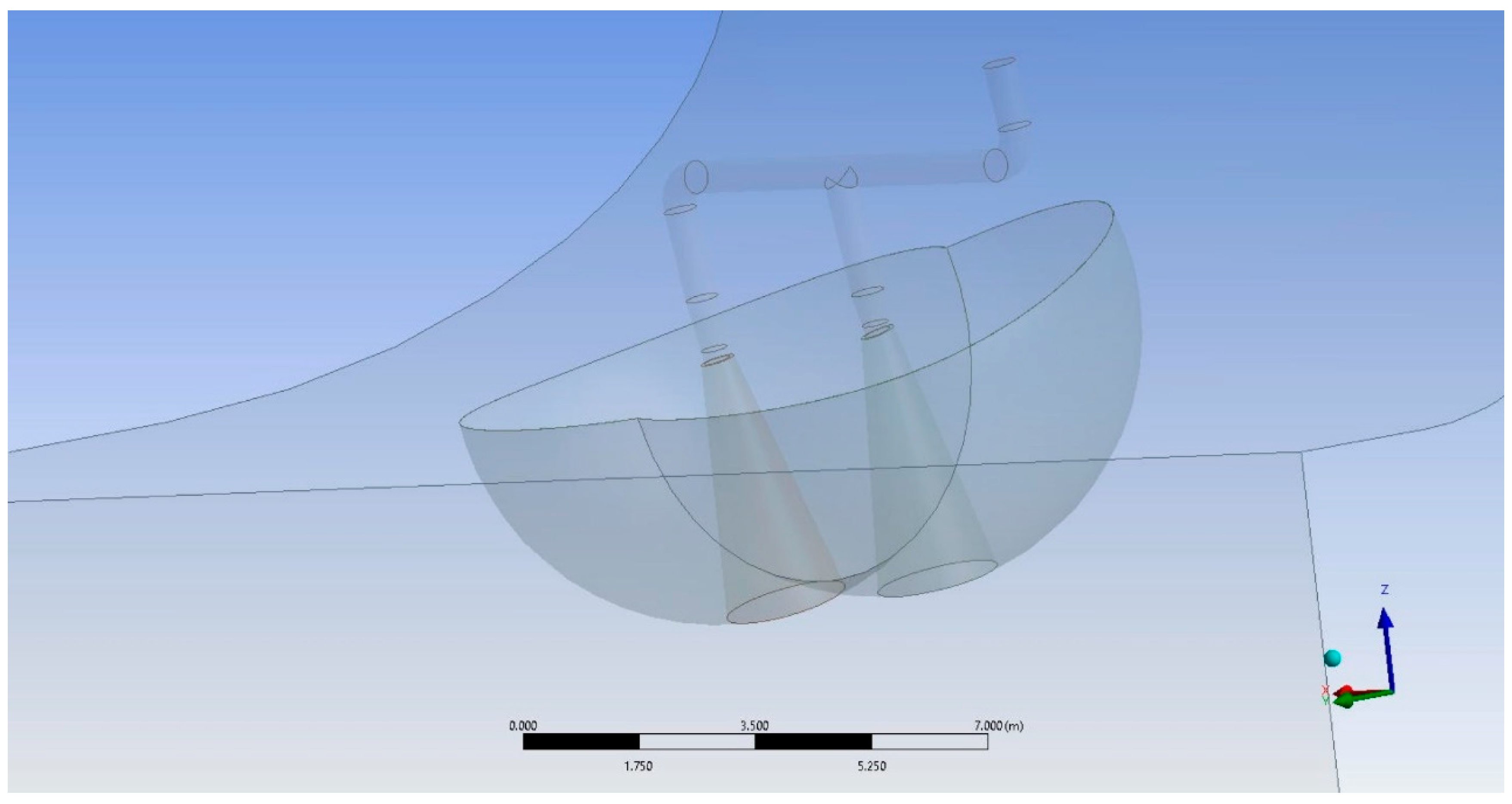
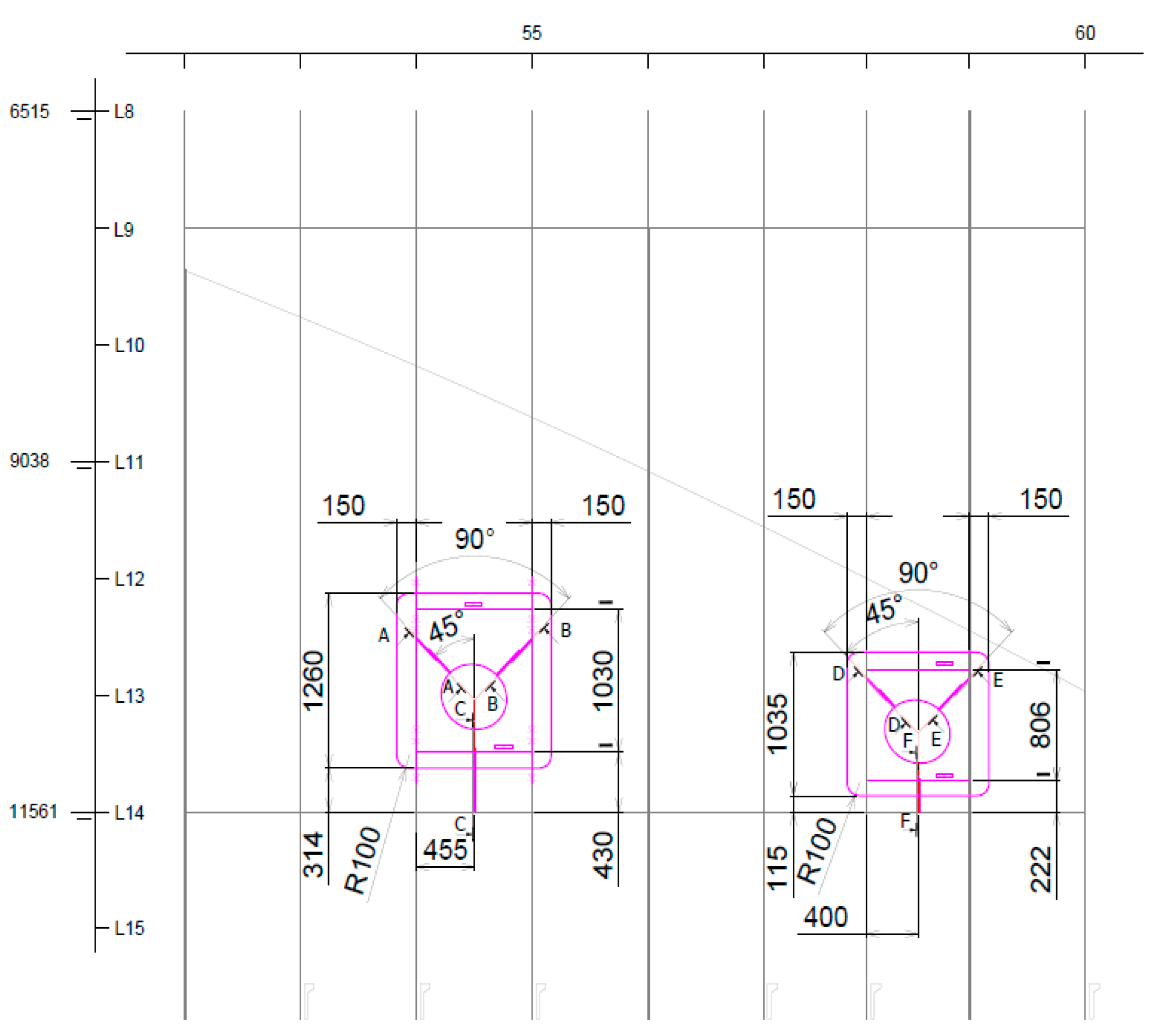

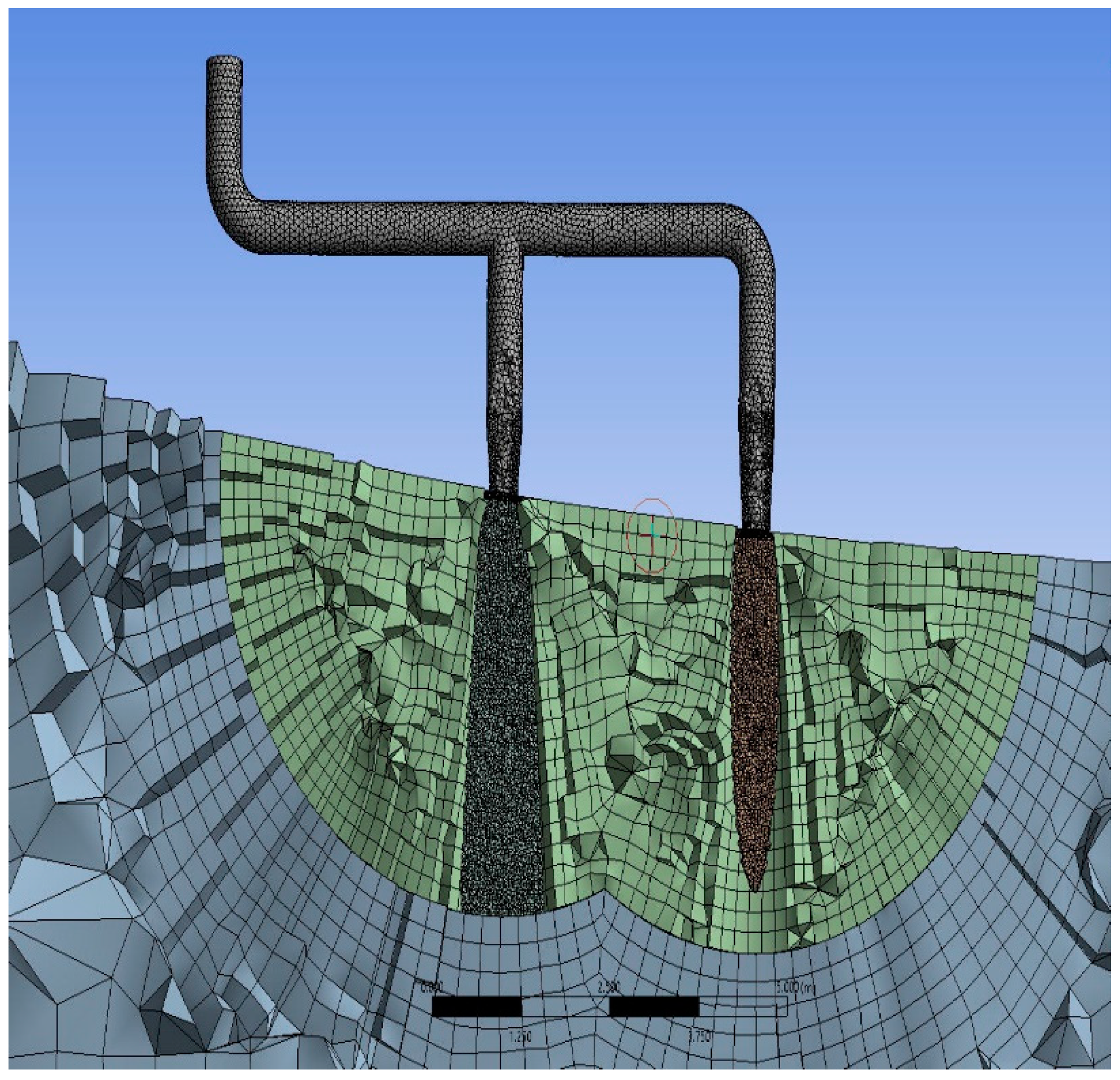
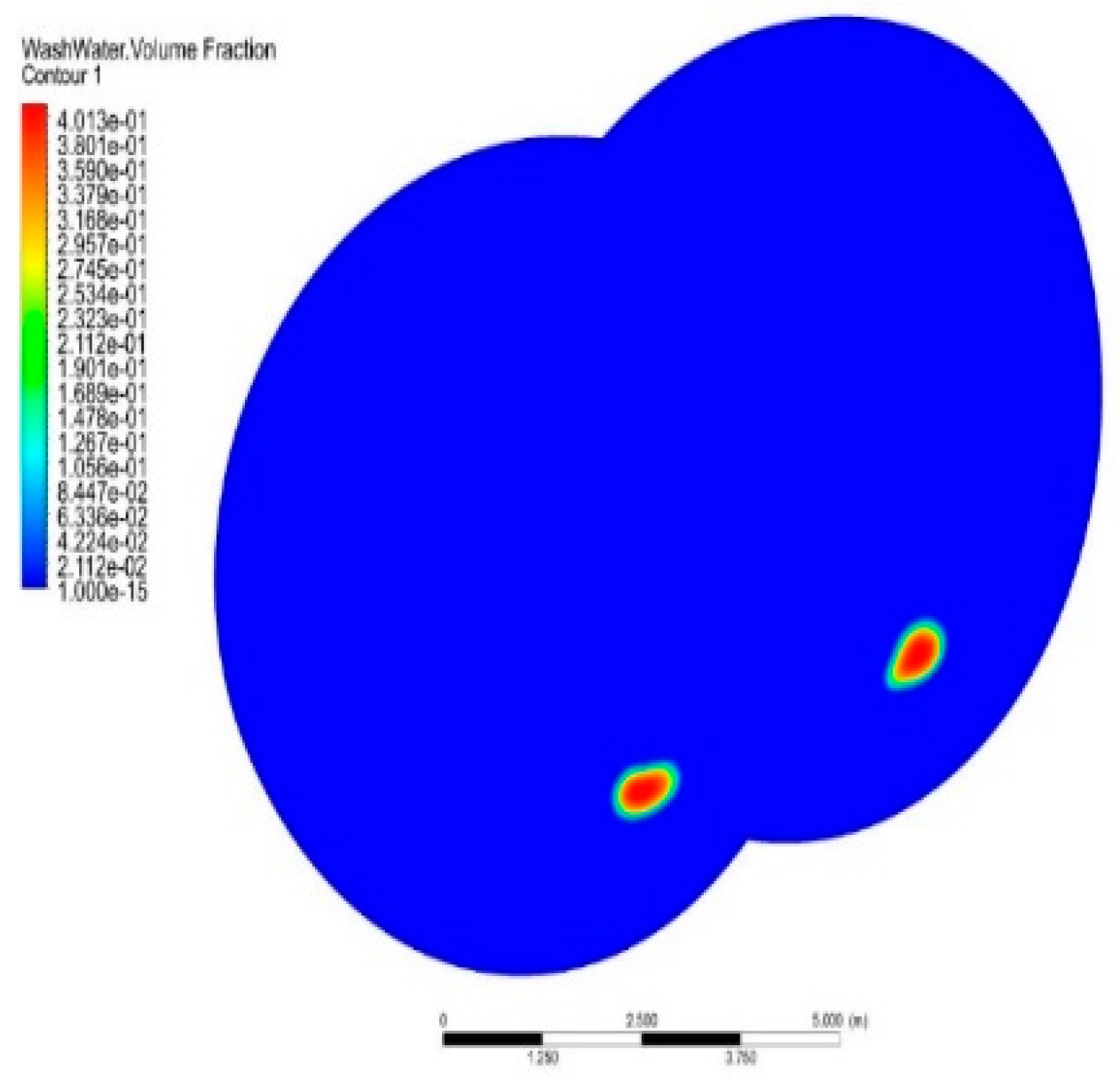


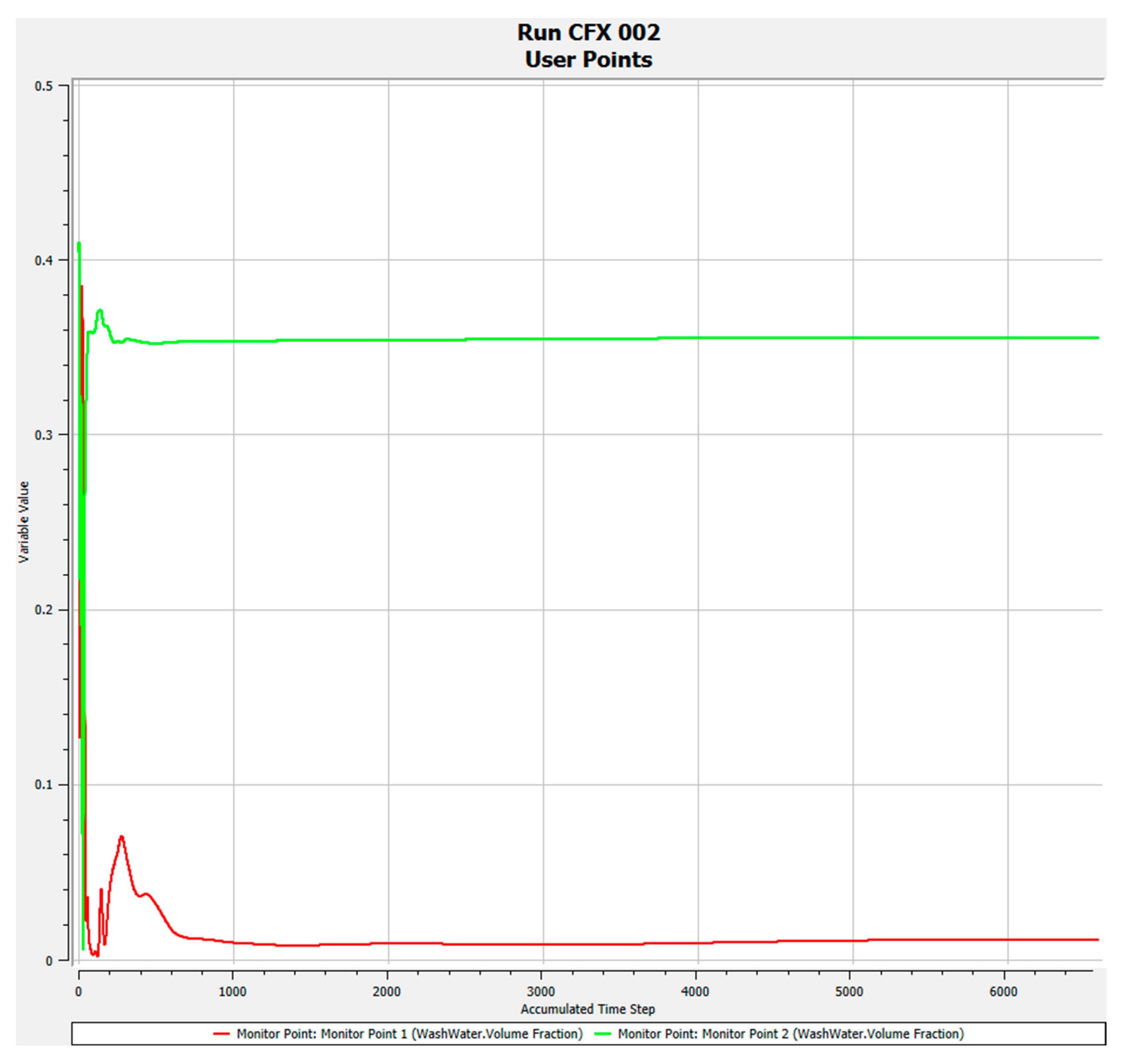
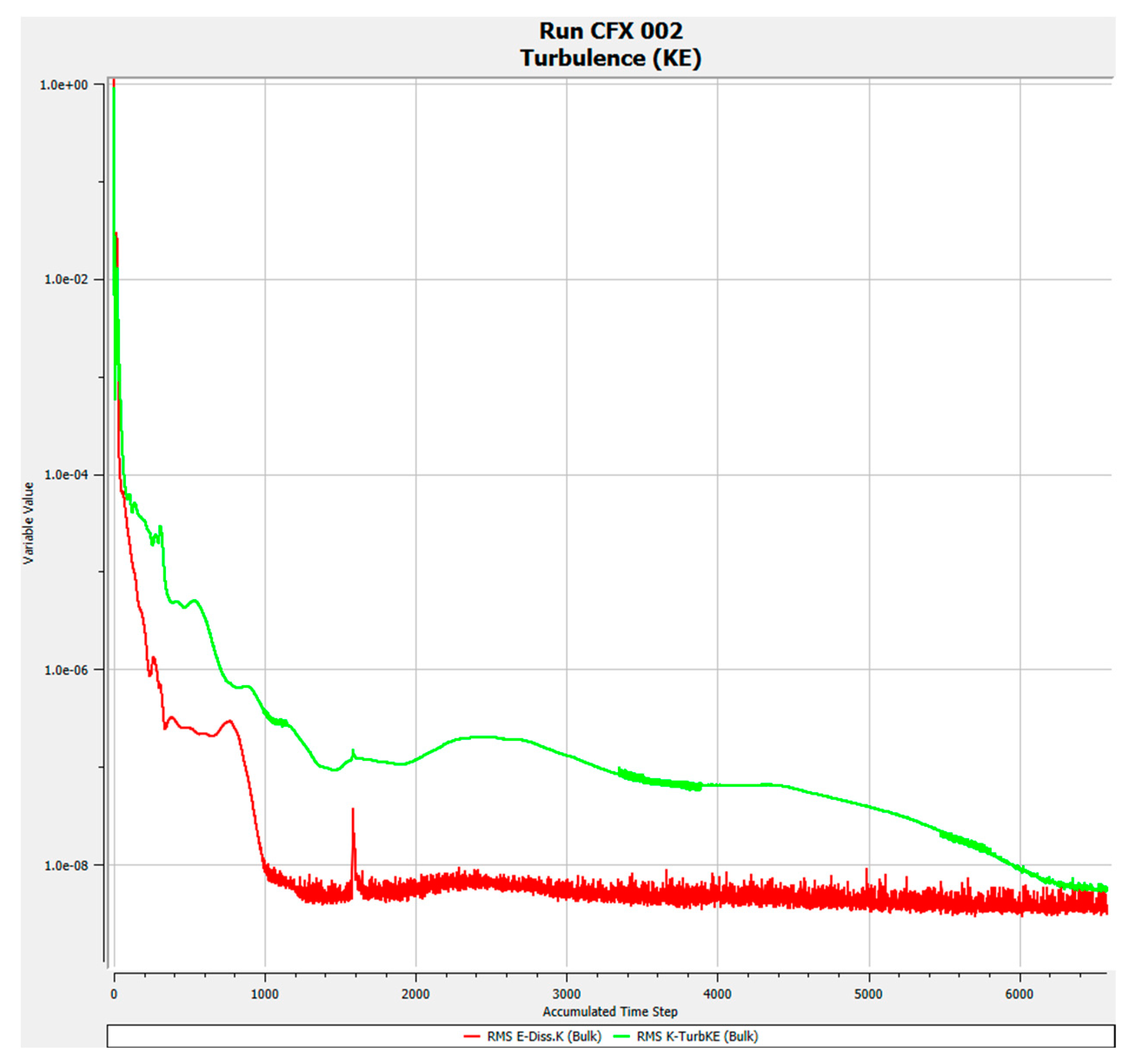
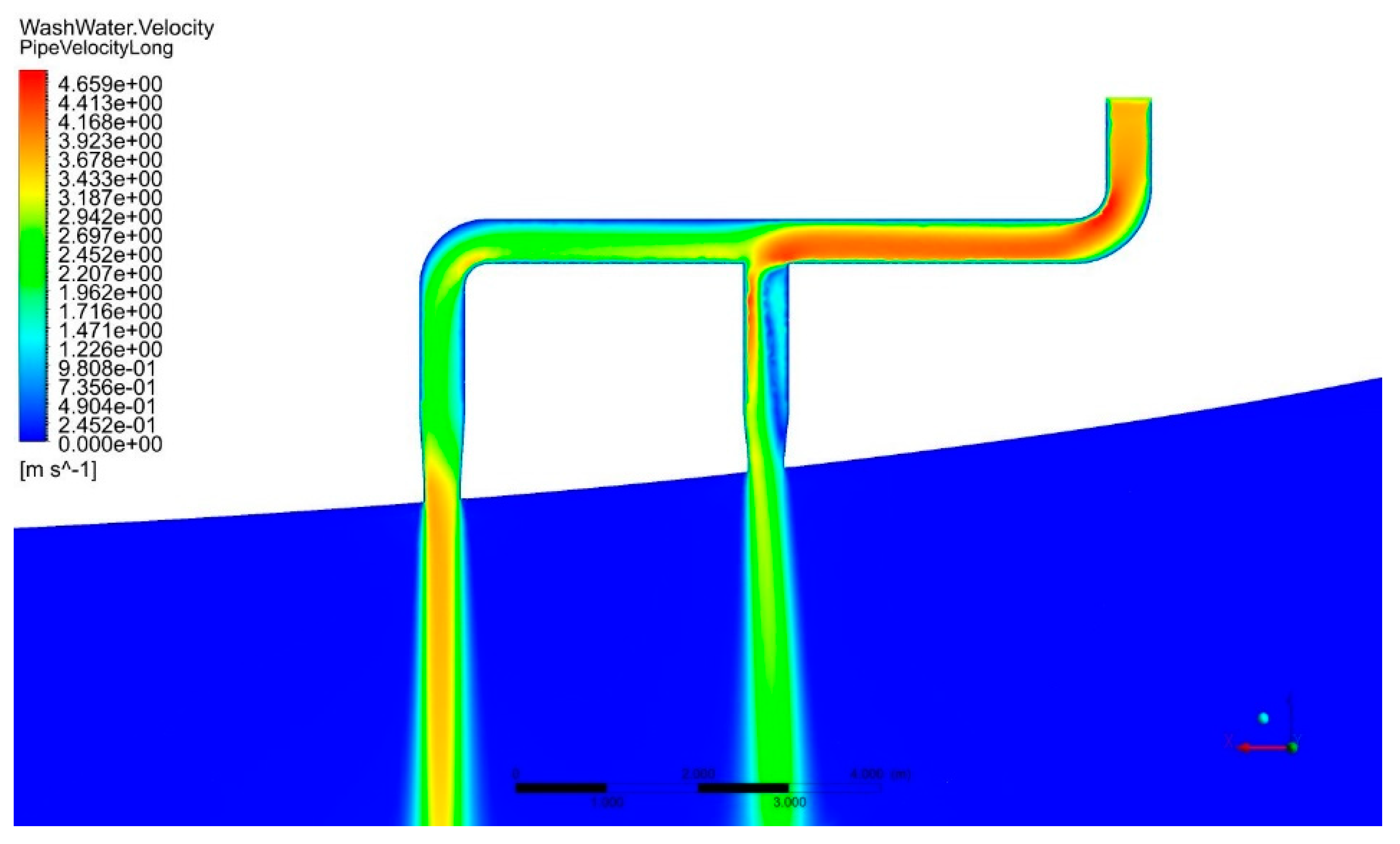

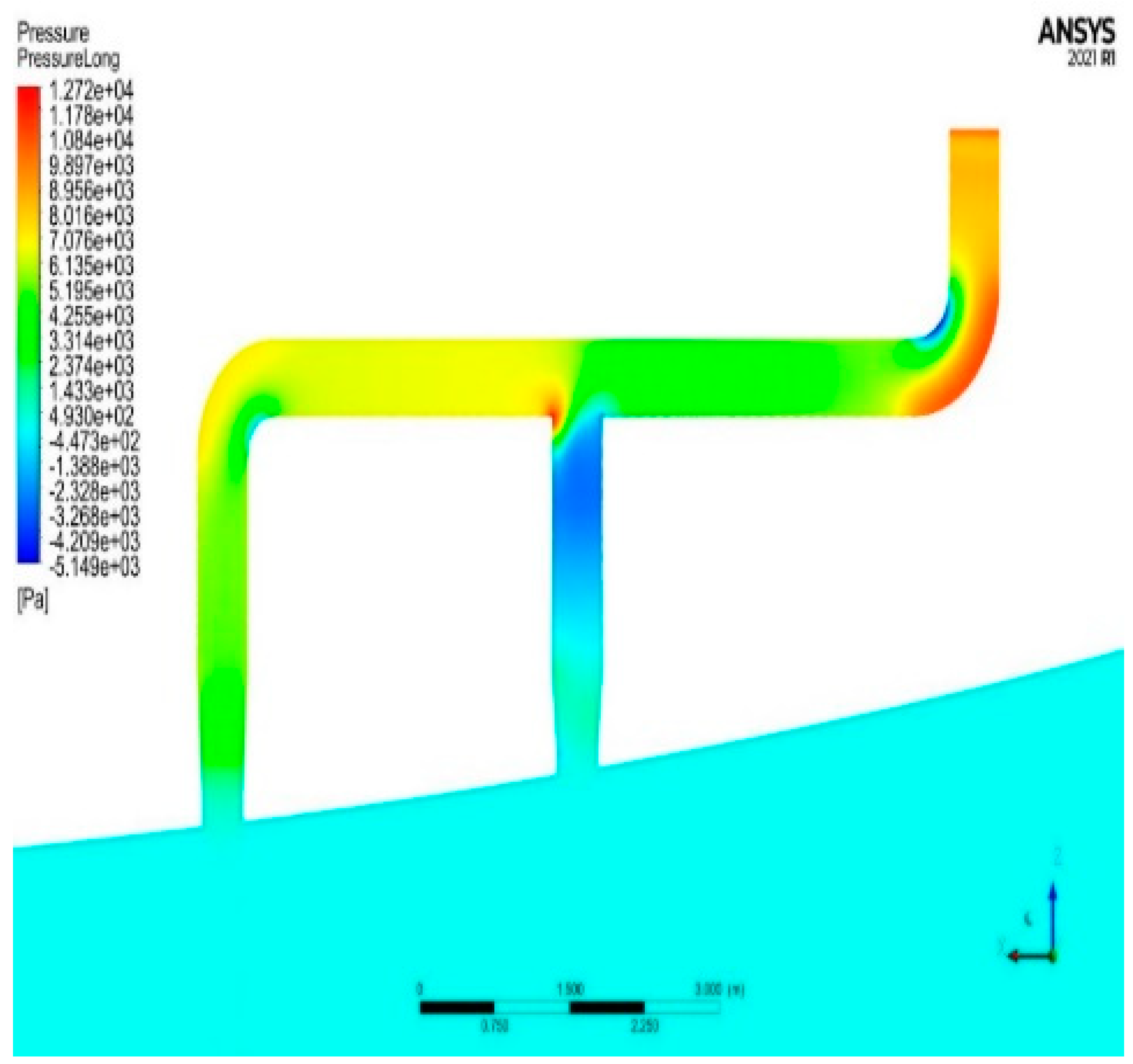
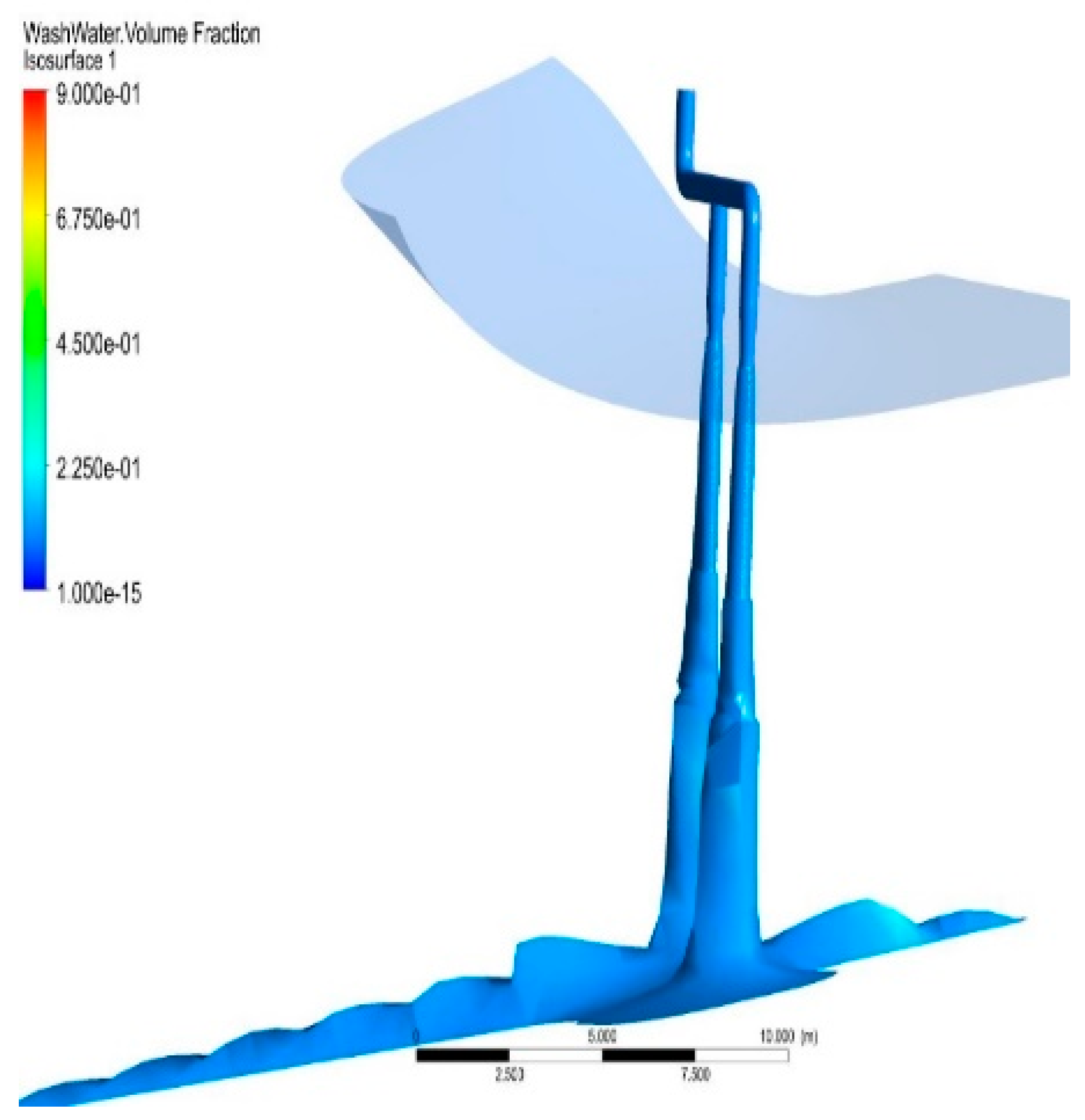

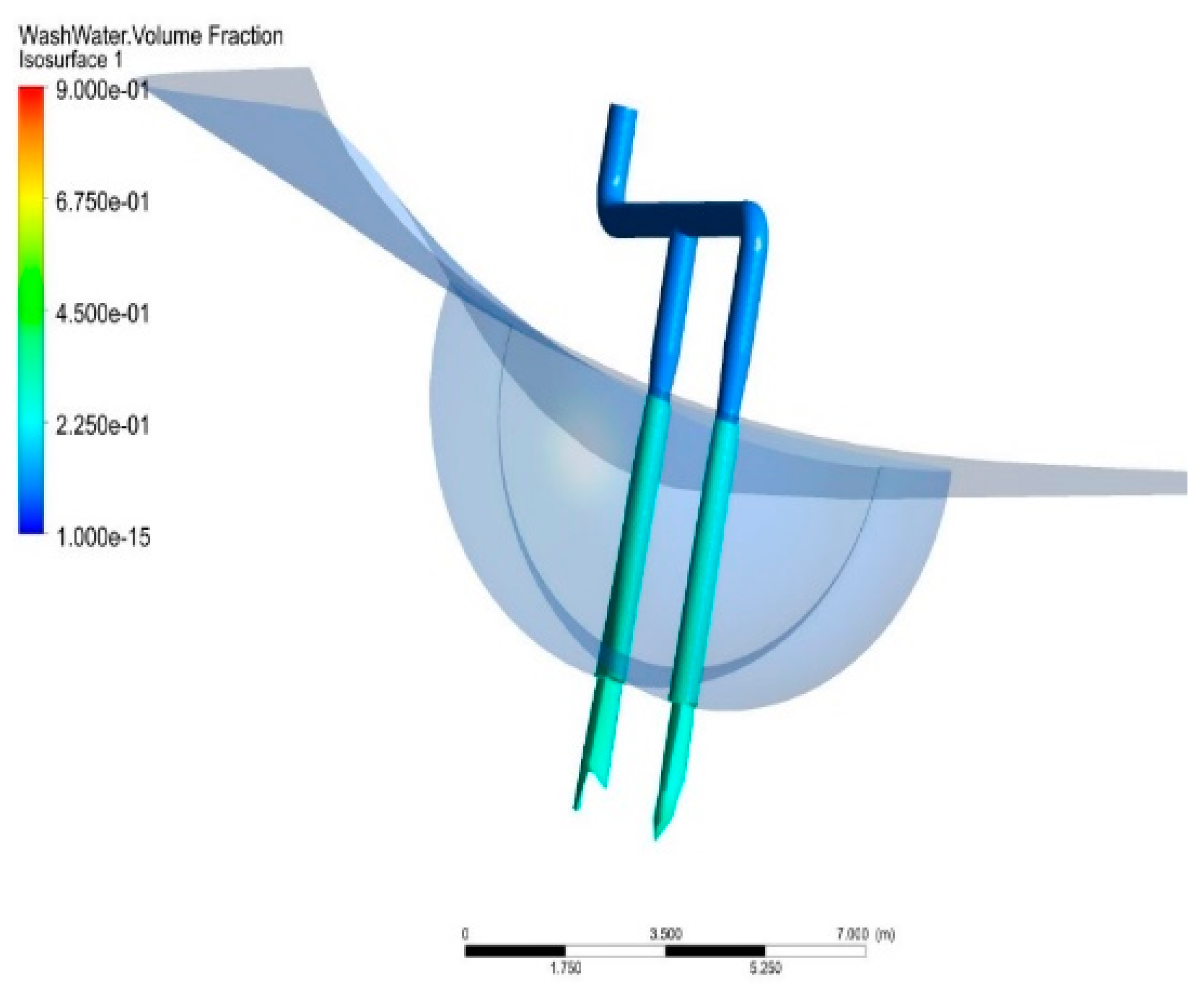
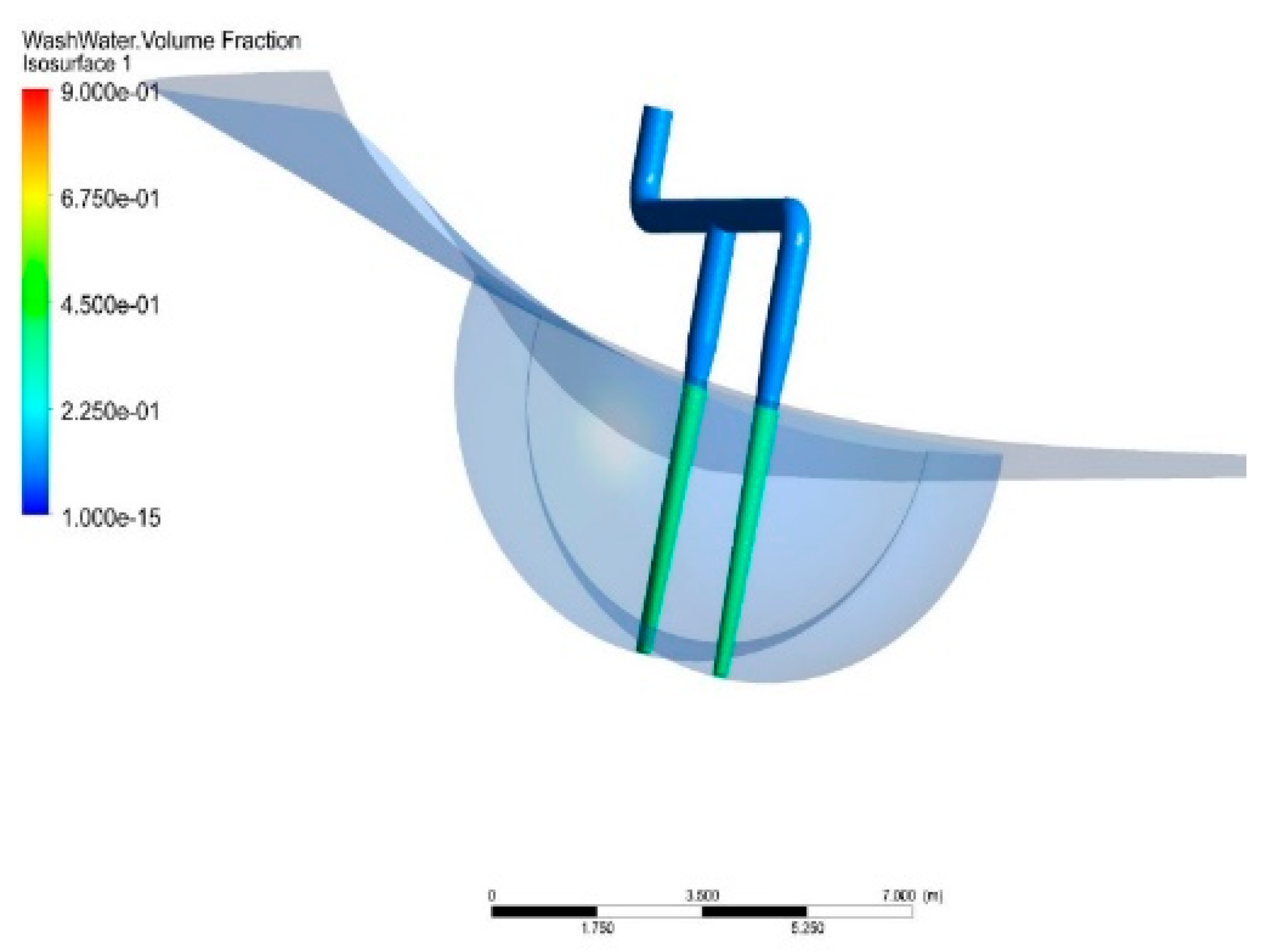

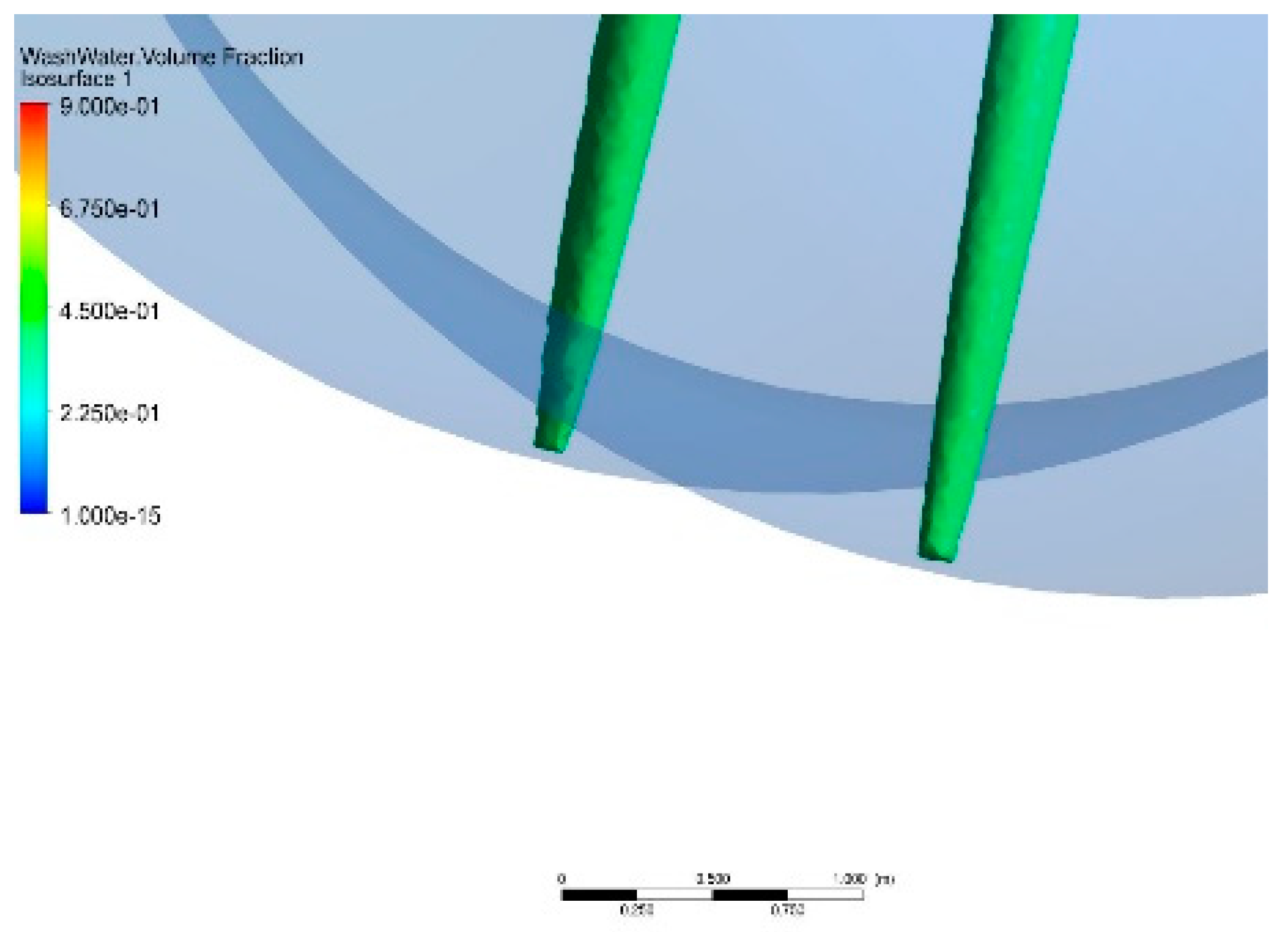
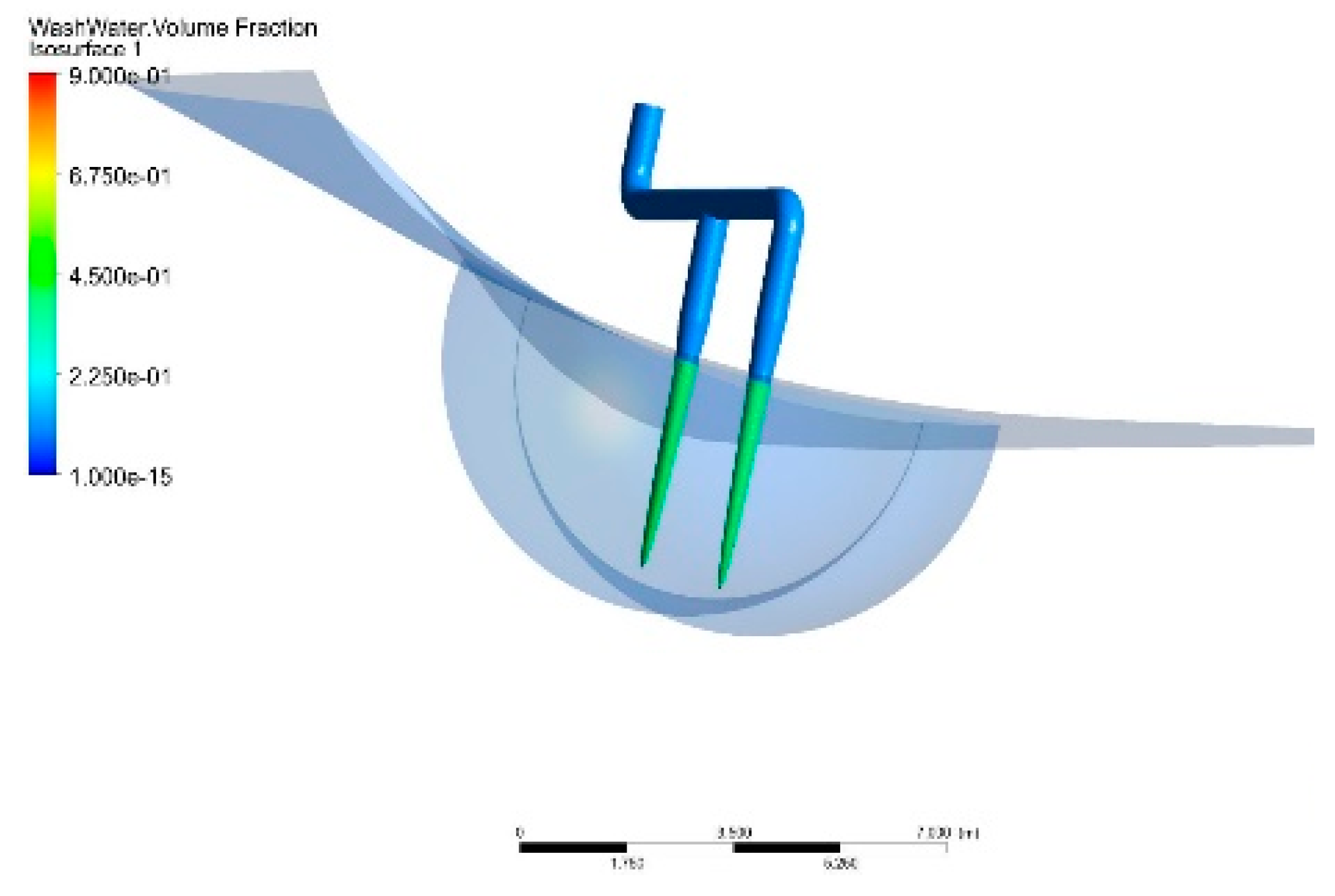

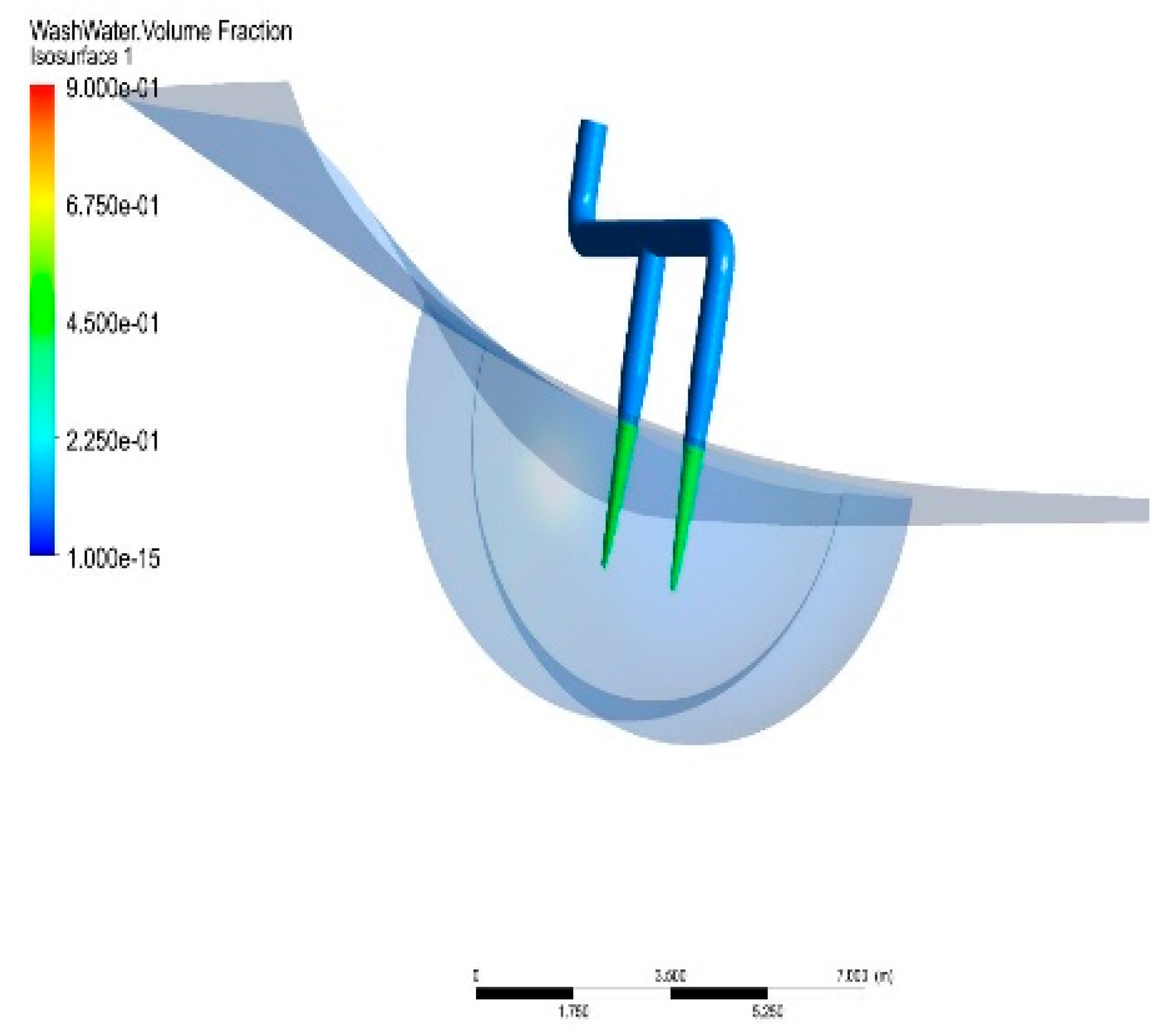
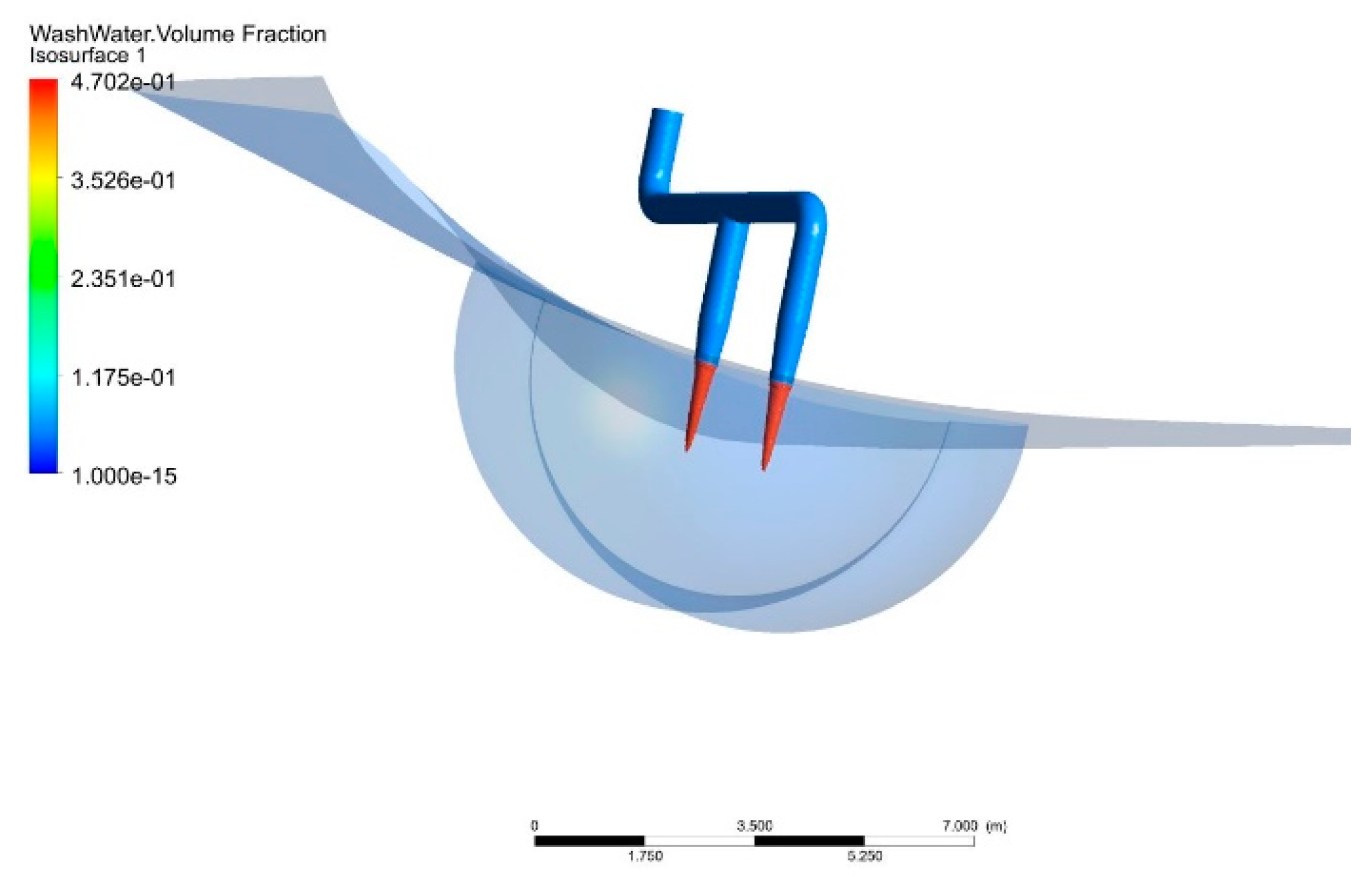
| Domain | Nodes | Elements | Tetrahedra | Hexaedra |
|---|---|---|---|---|
| D 400 LC | 1684594 | 925743 | 774419 | 129569 |
| Mesh Case | Max Element Length throughout Domain | Probe Volume | Max Element Length in the Interest Area | Nodes | Elements |
|---|---|---|---|---|---|
| Initial mesh | 0.7 m | 0.3 m | 0.04 m | 1684594 | 925743 |
| Rougher mesh | 0.7 m | 0.3 m | 0.06 m | 1223629 | 620681 |
| Refined mesh | 0.7 m | 0.18 m | 0.03 m | 2072666 | 1188839 |
| Mesh Case | Peak Volume Fraction |
|---|---|
| Initial mesh | 0.4013 |
| Rougher mesh | 0.3895 |
| Refined mesh | 0.4086 |
| Ship Speed [kn] | ME Load [%] | Power Plant Load [%] | Wash Water Flow [m3/h] | Wash Water Mass Flow [kg/s] | Wash Water Velocity [m/s] | Hydraulic Diameter [mm] |
|---|---|---|---|---|---|---|
| 0 | 85 | 75 | 2600 + 450 | 868.4 | 4.31 | 400 |
| Model Particulars | Maximum Volume Fraction | Acceptable Volume Fraction | Unity Check |
|---|---|---|---|
| 400 mm hydraulic diameter | 0.4013 | 0.47 | 0.853 |
Publisher’s Note: MDPI stays neutral with regard to jurisdictional claims in published maps and institutional affiliations. |
© 2022 by the authors. Licensee MDPI, Basel, Switzerland. This article is an open access article distributed under the terms and conditions of the Creative Commons Attribution (CC BY) license (https://creativecommons.org/licenses/by/4.0/).
Share and Cite
Ristea, M.; Popa, A.; Scurtu, I.C. Computational Fluid Dynamics Simulation Approach for Scrubber Wash Water pH Modelling. Energies 2022, 15, 5140. https://doi.org/10.3390/en15145140
Ristea M, Popa A, Scurtu IC. Computational Fluid Dynamics Simulation Approach for Scrubber Wash Water pH Modelling. Energies. 2022; 15(14):5140. https://doi.org/10.3390/en15145140
Chicago/Turabian StyleRistea, Marian, Adrian Popa, and Ionut Cristian Scurtu. 2022. "Computational Fluid Dynamics Simulation Approach for Scrubber Wash Water pH Modelling" Energies 15, no. 14: 5140. https://doi.org/10.3390/en15145140







